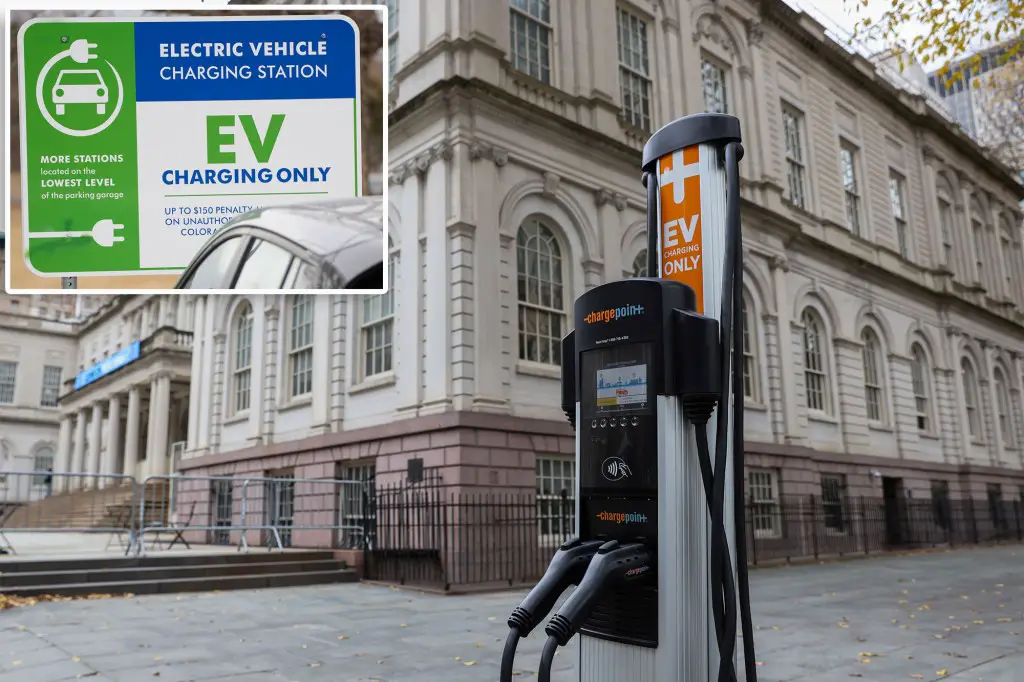New York is eligible for about $26 million in federal funds this year to build electric vehicle charging stations, the Biden administration said Thursday as it rolled out plans to make it possible to drive electric vehicles anywhere without fear of running out of battery power.
The initial batch of funds for fiscal 2022 are part of a $7.5 billion charging station allocation in President Biden’s $1.2 trillion bipartisan infrastructure bill, which he signed in November.
State officials will need to submit plans by Aug. 1 to the US Transportation Department in order to get the money, which requires locals to foot 20 percent of the bill.
Federal guidelines say that states must initially build out so-called Alternative Fuel Corridors along major roadways such as interstate highways. Along these specified corridors, electric vehicle stations will be required every 50 miles.
“We’re building out something that has never been done before. So there’s obviously a number of steps that we are going through to make sure that this is a strategic investment and a responsible stewardship of taxpayer dollars,” a Biden administration official said on a background call with reporters.
States are allowed to partner with private companies to build and manage the charging stations, but will have to conform to certain technical specifications to ensure that common varieties of electric vehicles will be able to actually use the docks.
“We expect that the private sector will be the backbone of actually building out physically much of those chargers and operating them in many cases,” an official said.
The infrastructure bill’s $7.5 billion for charging station includes $5 billion for states and $2.5 billion for local governments that is not yet distributed. The full amount of federal aid will be spread over five years.
The initial money for states is about $615 million for fiscal 2022, which ends Sept. 30, and is roughly proportional to state populations.
Electric cars currently are a tiny fraction of the US market — making up about 2.6 percent of sales, or 394,000 vehicles, last year. Another 1.4 percent were hybrids that use both gas and electricity.
The Biden administration hopes to broaden the appeal of electric vehicles through the charging station program.
“The first phase is fill in the corridors. Once those are built out… then after the first year, if [states] achieved that, in subsequent years then they use those funds in more community based charging,” an official said.
The federal guidelines call for 40 percent of stations to benefit “disadvantaged communities” — but an official made clear that standard is highly flexible.
“It’s not just that 40 percent of the chargers are in exact locations that are disadvantaged communities, but looking at how those benefits from the electric vehicles accrue to those communities, which can be from multiple different ways,” the official said.

Officials said that the US passed 100,000 electric vehicle charging stations in 2021. The Biden administration has a goal of 500,000 US charging stations by 2030 but it’s unclear how close the $7.5 billion will bring the nation toward that milestone.
The $1.2 trillion infrastructure bill was supported by Democrats, 19 Republican senators and 13 House Republicans. It also granted $5 billion to buy electric and low-emission buses.
Biden’s stalled Build Back Better Act, which centrist Sen. Joe Manchin (D-WVa.) has declared “dead” in the evenly divided Senate, includes $12,500 rebates for the purchase of electric vehicles as part of $555 billion in proposed environmental spending.
